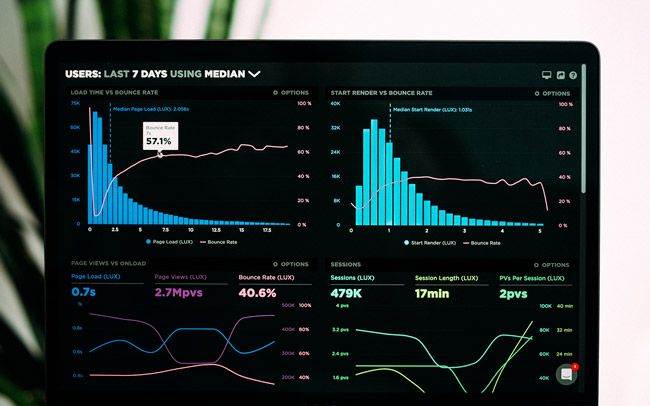12 Business Metrics That Every Company Should Know
Explore how performance metrics drive business success. From financial health to customer satisfaction, discover key insights with our expert guide. Optimize your strategies with data-backed decisions.
Nancy J. Hassler
In today's competitive landscape, planning, implementation, and monitoring are the three fundamental pillars of success for any business, irrespective of its niche. The matter is not limited to developing effective strategies and carrying out actions. Making a steady profit and keeping afloat requires constantly being on alert.
Therefore, measurable outcomes become the backbone of company management, aimed at assessing the effectiveness of implemented solutions and timely response when goals are not achieved.
What Are Performance Metrics?
As a central benchmark for companies, multiple calculations and measures known as performance metrics are integral to daily operations and simultaneously serve as powerful tools for enhancing strategic solutions. Depending on the industry and the objectives pursued, these indicators can be divided into financial, operational, customer, marketing, or employee performance measurements.

Several factors justify the value of these metrics for brands. They lay the foundation for making data-driven decisions and adjustments based on identified trends and assessments. Additionally, these metrics play a crucial role in setting business goals and monitoring progress to evaluate contributions toward these objectives. Other reasons that highlight their critical importance include:
- efficient resource allocation;
- comparison of performance with competitors;
- insights into audience behavior and demands;
- increased motivation and efficiency of the team.
Performance indicators are becoming increasingly popular in the business environment, guiding brands to enhance operational activity and strategically adjust approaches that will lead to long-term success.
From Metrics to Mastery: Understanding Sales Revenue's Role in Your Business
As one of the most valuable performance metrics, sales revenue is responsible for tracking the total income generated from the company's sales activities. The central role in determining the company's financial health and operation success, as well as comparative analysis, explains its importance.
Total Sales Revenue, Average Revenue Per User (ARPU), Sales Growth Rate, Sales Conversion Rate, Return on Sales (ROS), Revenue per Sales Rep, and other measurements are in focus, facilitating smart decisions, effectively optimizing sales approaches, and boosting growth.
Transforming Business Performance Strategy with Customer Lifetime Value Insights
As one of the top five performance indicators for 25% of software marketers surveyed by Gartner, Customer Lifetime Value represents the total amount of revenue generated by the client over the entirety of their relationship with the business. By encompassing all potential transactions during the customer's lifespan, CLV serves as an effective performance metrics tool for enhancing loyalty and retention strategies.

Split into historical and predictive elements, Customer Lifetime Value is calculated using the formula: Customer Value x Average Customer Lifespan. It enables organizations to assess the existing audience spending and estimate future transactions based on customer behavior and engagement, identifying areas that require extra investments. While Lifetime Value (LTV) focuses on the total revenue potential of a broader audience, CLV looks at each client value individually.
Boosting Profitability Through Effective Gross Margin Management
Gross Margin is a profitability measurement representing the percentage of a company's revenue remaining after deducting direct expenses such as labor, freight, shipping, supplies, and materials. A ratio of an organization's gross profit to its revenue metrics reflects the difference between total sales and the cost of goods sold (COGS).
This vital metric is calculated using the formula (Total Revenue — COGS/Total Revenue) × 100. Its value for investors and business owners includes effective cost management, appropriate pricing strategies, and the ability to assess the overall financial health of the organization.
The Significance of Social Media Engagement in Driving Performance Metrics
With the rapid development of high technology, social media engagement has become one of the most weighty metrics in business. The key goal is determining how efficiently business solutions and published content resonate with the audience and how the owner adheres to an overall strategy.
Tracking engagement rates — including comments, shares, likes, and reactions — provides valuable insights to strengthen customer relationships. Equally important is the Social Share of Voice (SSoV), which differentiates the brand from competitors, while the Follower Growth Rate and reach monitor the audience.
The Role of Customer Acquisition Cost (CAC) in Evaluating Growth Metrics

Widely used in conjunction with customer lifetime value, this metric indicates the cost incurred by a company when acquiring a single client. The higher the indicators, the more money is required, highlighting the company's need to adjust its growth strategy.
Measuring a Customer Acquisition Cost can help prevent companies and investors from collapsing due to a lack of understanding and control. Conversely, effectively monitoring these indicators can enhance return on investment and profitability. The CAC formula is calculated as (Cost of Marketing + Cost of Sales)/Number of New Customers.
Building Stronger Relationships: The Impact of Customer Loyalty and Retention
Customer loyalty and retention cover several performance metrics that assist brands in establishing and strengthening their relationships with audiences. They indicate customer satisfaction while directly influencing a company's profitability and growth. The Customer Retention Rate (CRR) measures the percentage of client retention over a specific period, while the Customer Satisfaction Score (CSAT), determined through surveys, assesses how satisfied customers are with a service or product.
Another important metric is the Repeat Purchase Rate (RPR), which indicates the percentage of customers who made several purchases within a specific timeframe. On the other hand, the Churn Rate refers to customers who terminated their interactions with the brand.
The Power of NPS: Transforming Customer Feedback Into Strategic Insights
A market search index ranging from -100 to 100, the Net Promoter Score gauges customer satisfaction. The latter is expressed in the desire to recommend the company to others, while the basis for calculations is a single survey question.

NPS provides a clear view of customer sentiment, assisting you in identifying strengths and weaknesses in loyalty and retention incentives, and allowing for adjustments to implemented solutions. The formula for finding is the Percentage of Promoters — the Percentage of Detractors. Respondents are invited to choose from 0 to 10, indicating their loyalty and willingness to endorse the brand with positive feedback.
Harnessing Qualified Leads per Month for Enhanced Sales Performance
Qualified leads per month are among the vital performance metrics, serving as a universal benchmark for companies across various niches in evaluating and adjusting their marketing and sales effectiveness. Identified as potential customers with a high probability of establishing as paying, this indicator is split into Marketing Qualified Leads (MQLs) and Sales Qualified Leads (SQLs).
The difference between them is that, in the first case, leads expressed interest in the organization's offers through email campaigns, social media engagement, content downloads, subscriptions, and other marketing interactions. The Sales Qualified Leads, in turn, are ready for direct sales engagement and have been evaluated by the sales team.
Turning Leads Into Clients: The Importance of Conversion Rate Key Performance Metrics
Alternatively known as Sales (SCR) or Lead Conversion Rate (LCR), the Lead-to-Client Conversion Rate is the crucial metric for assessing a business performance in the sales funnel. This proportion reflects the effectiveness of converting qualified leads into actual customers and is commonly regarded as a Key Performance Indicator (KPI) for a company's sales department.
The standard formula for calculating the Lead-to-Client Conversion Rate (%) is the Number of Qualified Leads that Resulted in Sales/Total Number of Qualified Leads × 100. Since establishing a single general proportion for all businesses is impossible, the core considerations guiding the analysis are a company's past indicators and overall market performance.
Driving Engagement and Conversions With Monthly Website Traffic Analysis
Various factors explain the value of tracking monthly website traffic using key performance metrics. It contributes to a deeper understanding of audience behavior, allowing organizations to tailor marketing strategies to their tastes and improve performance. At the same time, such a strategy is a key to identifying trends, which can be reflected in published content and performance, highlighting the most attractive forms.
Analyzing monthly website traffic concerns focusing on key performance indicators (KPIs) central to a company's operations and methodologies. These include Total Visitors, Page Views, Traffic Sources, Bounce Rate, Average Session Duration, Conversion Rate, New vs Returning Visitors, Exit Rate, and others.
Tracking Project Efficiency Through Met and Overdue Milestones
While a milestone denotes a project's life cycle checkpoint, indicating progress toward completion, splitting it into met and overdue categories serves as critical performance metrics to track the efficiency of the business's operations and identify areas for improvement. While successful completion of the met milestones coincided with designated deadlines, overdue ones did not, underlining potential issues.
Using Return on Investment (ROI) to Measure and Enhance Revenue Metrics
Return on Investment (ROI) is among the most impactful growth metrics that evaluate a website's effectiveness and other digital marketing strategies. This fundamental measurement answers how much is generated from an investment compared to associated maintenance and promotion costs. The following formula determines ROI: (Total Costs/Net Profit) × 100.

The answer to the question of what are performance metrics encompasses many points essential for understanding the nature and distinctions of these measurements, which play a crucial role in various business management processes. Performance indicators serve as a framework for assessing the effectiveness of developing business solutions and evaluating their implementation's feasibility.
FAQ
What's the difference between performance metrics and key performance indicators (KPIs)?
Performance metrics measure specific areas of business against established objectives or goals. On the other hand, key performance indicators (KPIs) are a subset of performance metrics and use specific target metrics to measure performance more precisely.
Why is it important to choose the right business metrics for measurement?
Choosing the right business metrics is crucial because tracking irrelevant KPIs can lead to distractions and stress over numbers that don't impact a company's development. The right metrics provide meaningful insights into specific business areas, facilitating informed decision-making.
